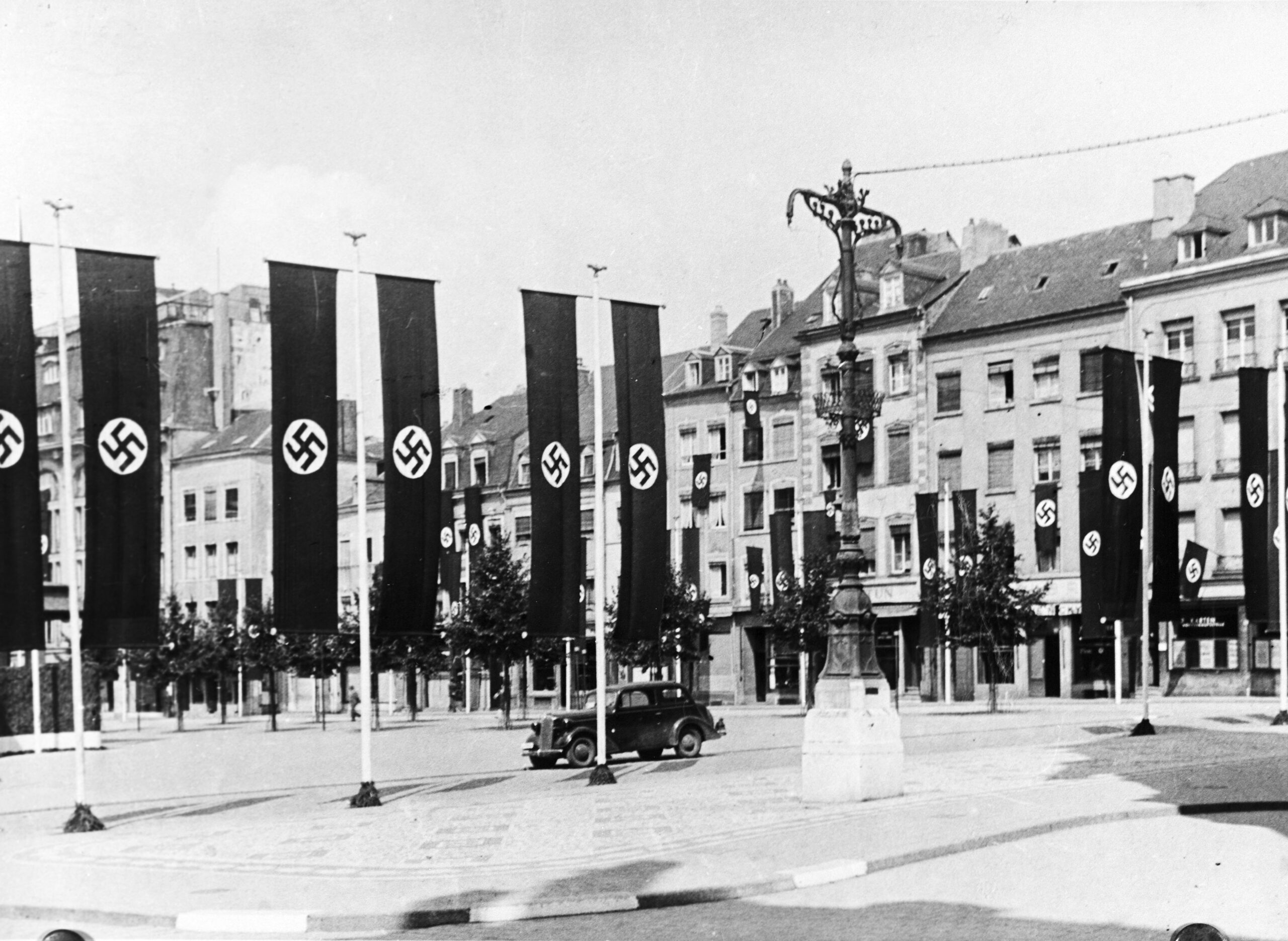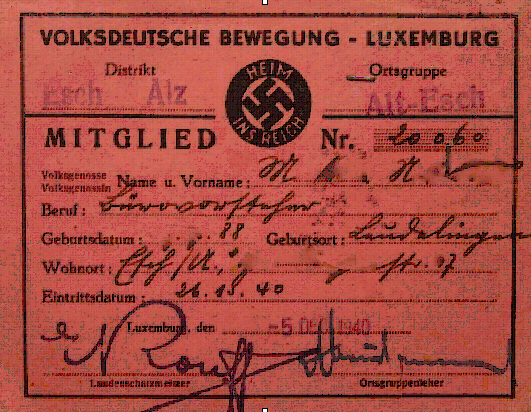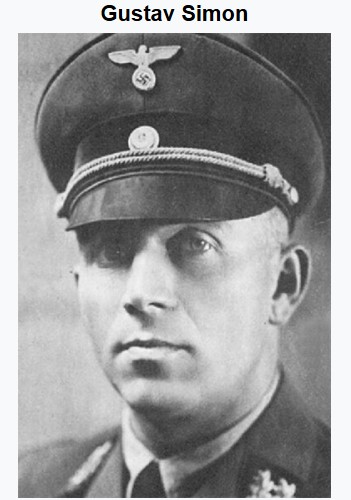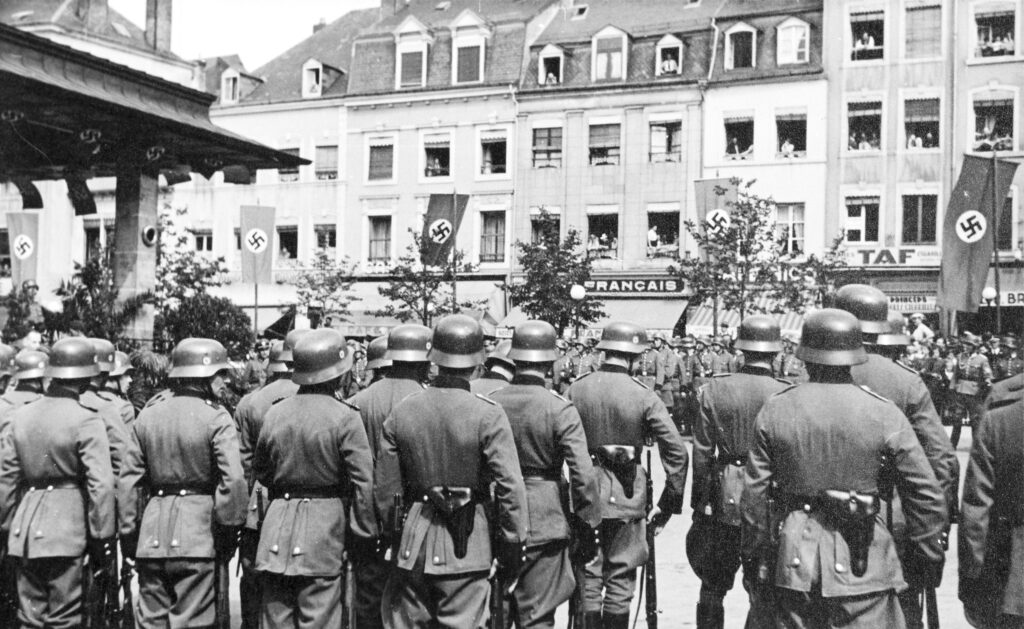
Header photo Nazi flags adorn Place Guillaume, one of the main squares in Luxembourg City. © Photothèque de la ville de Luxembourg. Author unknown
Grand Duchess Charlotte and the Luxembourgish government, notified the day of the invasion, went on the run. Their flight first brought them to Portugal, then to Canada. Finally, the Grand Ducal family and the government in exile settled in London to encourage the Luxembourgish resistance and work together with the Allied governments.
On 13 July 1940, the Volksdeutsche Bewegung (VdB) was founded in Luxembourg City. Its main goal was to push the population towards a German-friendly position by means of propaganda, using the phrase Heim ins Reich.

At its peak, the VdB had 84,000 members or nearly 30% of the population. However, all civil servants, police, teachers, the judiciary etc were forced to become members or lose their jobs which meant they were unable to support their families. Most were very passive members and would not consider denouncing jews or members of the resistance.
The Nazis considered the Luxembourgish people as just another Germanic ethnic group and the Grand Duchy a German territory.
A massive propaganda campaign of Germanisation was launched. People who were openly opposed to the regime lost their jobs or were deported, mainly to eastern Germany and in the worst cases sent to the death camps. As of 6 August 1940, German became the only official language, and the usage of the French language was banned.
At the end of July 1940, the military occupation was replaced by a civil administration under the command of Gauleiter Gustav Simon, from the neighbouring Gau (party district) Coblence-Trier. Gustav Simon ruled Luxembourg with an iron fist.

The Gestapo (Geheime Staatspolizei, or Secret State Police) arrived in Luxembourg soon after the German invasion and quickly became a feared instrument of Nazi repression. Their role was to eliminate resistance, enforce German rule, and terrorise the local population into submission.
The Gestapo set up headquarters in the Villa Pauly, a mansion in Luxembourg City that became synonymous with torture, interrogations, and executions. Gestapo field offices were established in the Villa Seligmann in Esch in the south and the Villa Conter in Diekirch in the north.

Gestapo headquarters Villa Pauly. © Photothèque de la ville de Luxembourg. Author Tony Krier
Their first targets were political dissidents, former government officials, and journalists who opposed Nazi rule. They also worked with the Volksdeutsche Bewegung (VdB) to identify “loyal Germans” and persecute those who resisted Germanisation.

German troops in the centre of Luxembourg city. © Photothèque de la ville de Luxembourg. Author unknown